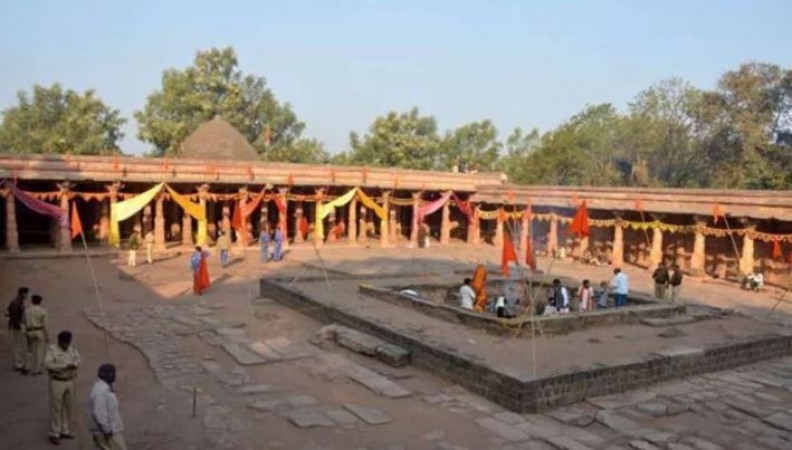
Dhar: The Paramara dynasty holds a significant position in Indian history, not only for their political achievements but also for their contributions to art and architecture. Between the 10th and 13th centuries, this dynasty ruled over a substantial part of Central India, with their capital in Dhar, present-day Madhya Pradesh. King Bhoja, the most celebrated ruler of this dynasty, was a great patron of art and architecture. During his reign in the early to mid-11th century, a temple dedicated to Saraswati, the goddess of knowledge, was constructed in Dhar.
The temple became an important center of education, attracting pilgrims from distant places. However, like many Hindu temples of the medieval period, it also faced destruction at the hands of Islamic invaders.
In recent times, there has been a renewed interest among the Hindu community to revive their glorious past, which was obscured by dynastic politics. Recent archaeological excavations conducted by the Archaeological Survey of India at Kashi Vishvanath have revealed that a structure adjacent to it was built by destroying a Hindu temple. In a similar context, the High Court of Madhya Pradesh has ordered the Archaeological Survey of India to conduct a scientific investigation at Bhojashala.
According to archaeological records, Bhojashala, situated in Dhar, was originally a temple of Saraswati built by King Bhoja in the 11th century. Various historical documents, including the Indian Archaeology Review of 1984-85 and the Corpus Inscription Indicarum Volume-7, provide evidence supporting this claim. The discovery of Hindu sculptures and remnants of a temple during archaeological excavations in 1987 further substantiates this claim.
Contrary to claims that Bhojashala is a mosque, the presence of Paramara-style pillars bearing Hindu sculptures inside the complex, along with architectural ruins of temples used for constructing graves, suggests otherwise. These remains have been colored green to hide their identity as temple remnants.
Under the guidance of Prof. Alok Tripathi, a team of archaeologists will examine the inscriptions present on the ruins inside Bhojashala and the nearby Dargah. The information gleaned from these inscriptions will help in dating the structure at Bhojashala. Archaeologist KK Lele has pointed out that two pillars at Bhojashala contain inscriptions meant for teaching grammar.
Additionally, archaeological excavations will be conducted inside the Bhojashala complex using scientific methods. The presence of an adhisthana (platform) indicates that the original temple was destroyed and a new structure was built using its ruins. Carbon dating, although limited to organic substances, may provide valuable insights if charcoal or ash is recovered during excavation.
Once the archaeological investigations are complete, a detailed report will be submitted to the High Court. This report will provide valuable evidence supporting the claim that King Bhoja constructed a temple of Vagdevi in Dhar, which was later destroyed by Islamic invaders. Similar to the restoration work at Ayodhya, Bhojashala is expected to regain its old glory with the help of archaeological excavations.
Relief from Scorching Heat Expected as Rainfall Forecasted for UP and Bihar
Afghan Consul General Zakia Wardak Resigns Amid Rs 18 Crore Gold Smuggling Allegations
Nepal Decides to Print New Rs 100 Currency Note with Controversial Map